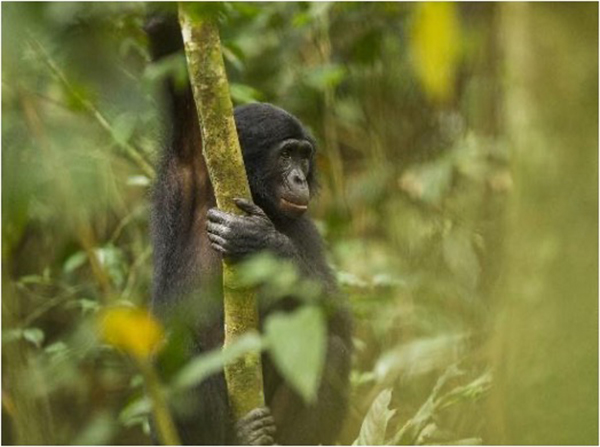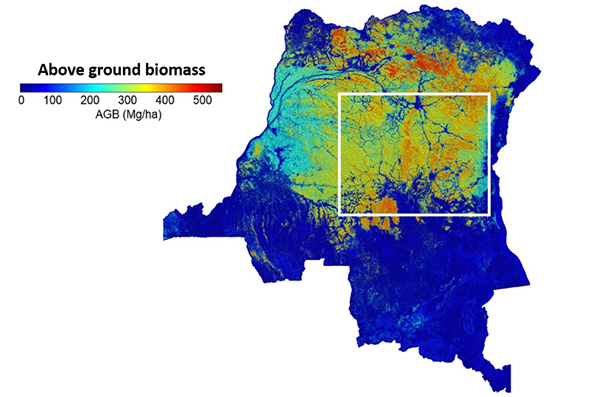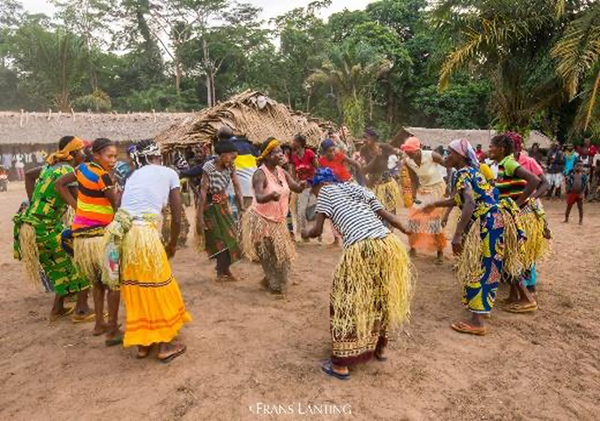Two Projects: Up to Hundreds of Millions of Tonnes of Carbon Dioxide
It’s said the world has two lungs: the rainforests in South America and the rainforests in Africa. But, from 2001 to 2020, it’s estimated the Democratic Republic of the Congo (DRC), the fifth most forested country in the world, lost approximately 8% of its tree cover. This is equivalent to 9.71 billion tonnes of carbon dioxide equivalent (CO₂e) emissions.i

So, we’re pursuing an investment in the heart of Africa to protect our future — as well as our past, because this rainforest is also home to one of human’s closest genetic relatives, the endangered bonobo great ape.
We have entered into an exclusive term sheet with the Bonobo Conservation Initiative (BCI) to provide initial funding for BCI to develop two carbon credit projects in the DRC. BCI is an international non-profit organization based in Washington, DC and the DRC, with the goal of protecting bonobos and their natural habitat. BCI team members have executed multiple carbon credit and conservation projects around the globe.
The scale is enormous. The Bonobo Peace Forest (BPF) — a network of community-managed protected areas in the Congo Basin developed by BCI in partnership with Congolese organizations and communities — covers 5,258,700 hectares, an area larger than Massachusetts, Connecticut and Rhode Island combined.

And it’s under threat from deforestation, slash-and-burn agriculture, forest degradation, mining and illegal logging, as well as charcoal production.
Protecting these two project areas has the combined potential to avoid and remove hundreds of millions of tonnes of carbon dioxide equivalent (CO2e) over 30 years. Alongside these huge climate benefits is the possibility to generate multiple social and economic benefits for local communities.
So, Carbon Streaming has entered into a term sheet to provide initial funding to develop two carbon credit projects: the Sankuru Nature Reserve, which contains some of the highest biomass forest in the entire Congo Basin, and the Kokolopori Bonobo Reserve, which boasts one of the world’s largest known bonobo populations. Between them they cover 67% of the Bonobo Peace Forest.

As well as the expert BCI team, participation by indigenous people will be central to the long-term vision of the Bonobo Peace Forest.
BCI employs local residents as field team members, provides education on conservation, as well as investment to generate regional social and economic benefits including infrastructure, health clinics, employment and women’s initiatives.
Bonobos are only found in the DRC and their protection requires boots on the ground to take on poachers hunting bonobos for the illegal bushmeat trade. So BCI has also trained and equipped over 200 trackers and ecoguards.
In line with the high impact potential of these incredible conservation and carbon offset initiatives, the proposed projects will use the REDD+ framework developed by the UN Framework Convention on Climate Change. In addition, it is anticipated that each of these proposed projects will be certified through the Verified Carbon Standard (VCS), the Climate, Community & Biodiversity Standard (CCB) and the Sustainable Development Verified Impact Standard (SD VISta), all of which are administered by Verra. The Company expects the projects to be developed over the next 18-24 months.
As our President & CEO, Justin Cochrane commented, “Carbon Streaming is thrilled to be partnering with BCI to develop these two vital projects that fight climate change, invest in their local communities and protect the endangered bonobos and many other species.”
Stay up to date with the latest Carbon Streaming news and new Carbon Blog posts by signing up to our email list and following us on Twitter and LinkedIn.
i Source: https://www.globalforestwatch.org/ (2021)
Forward-Looking Information: Some of the posted entries on the Carbon Blog may contain forward-looking information. Forward-looking information address future events and conditions which involve inherent risks and uncertainties. Actual results could differ materially from those expressed or implied by them. For further information about the risks, uncertainties and assumptions related to such forward looking information we refer you to our legal notice.